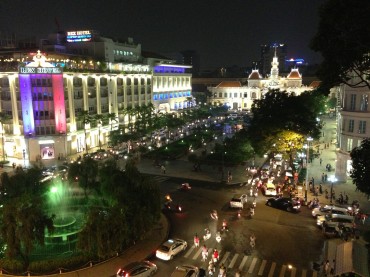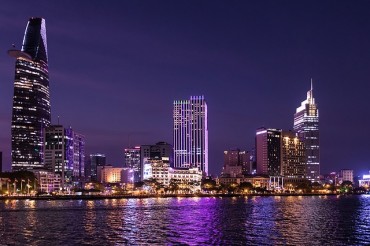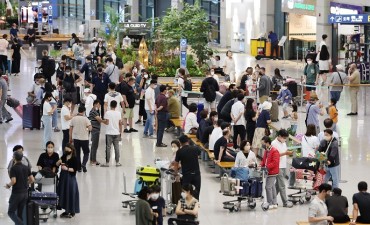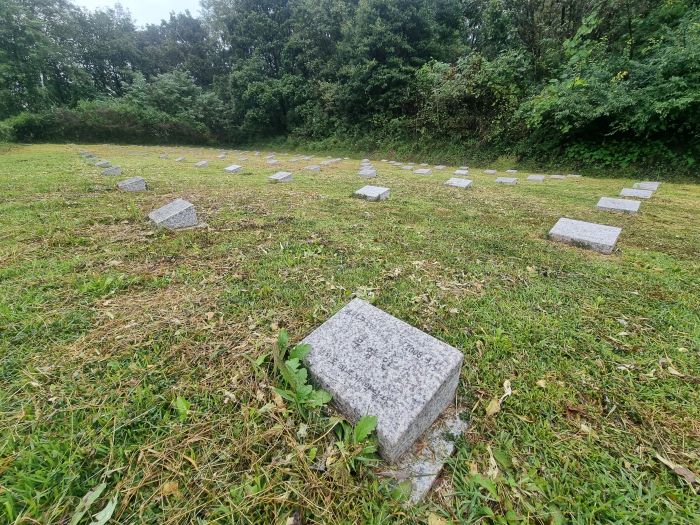
There are only about 20 tombstones with ranks and names, and all the rest are inscribed with “Unknown.” (Yonhap)
PAJU, Oct. 1 (Korea Bizwire) –Chuseok is a traditional Korean holiday celebrated in the fall during the harvest season. People celebrate it to express gratitude to their ancestors for helping with the year’s farming and to wish for a successful harvest in the upcoming year. In simpler terms, Chuseok is a time when Koreans remember their ancestors, and it’s a big deal.
During Chuseok, people visit parks and cemeteries all across the country to pay their respects to the deceased. But there’s one cemetery, the North Korean Military Cemetery in Paju-si, Gyeonggi-do, that seems particularly lonely this time of year. Paju is an area near the border with North Korea.
The cemetery is surrounded by trees covered in spider webs that stick to you as you walk by. The sign at the entrance is so faded that you can’t read it, and it’s even cracked in places.
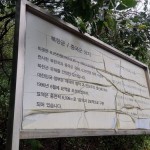 Inside, there are hundreds of tombstones marked as “unidentified” because no one knows who the people buried there are. This cemetery, called the “North Korean Military Cemetery,” was established in 1996 because international rules and human decency dictate that even enemy soldiers should be buried with respect.
Inside, there are hundreds of tombstones marked as “unidentified” because no one knows who the people buried there are. This cemetery, called the “North Korean Military Cemetery,” was established in 1996 because international rules and human decency dictate that even enemy soldiers should be buried with respect.
At first, it held the remains of North Korean and Chinese soldiers found all over the country. Initially, it was named the “North Korean Army-Chinese Army Cemetery,” but in 2014, when all the Chinese soldiers’ remains were sent back to China, it was renamed the “North Korean Army Cemetery.”
When Chinese soldiers were buried there, Chinese tourists often visited the cemetery. But after the Chinese remains were sent back, the cemetery became deserted, and nobody went there.
Now, the cemetery is the final resting place for over 800 individuals, including North Korean soldiers who died in the Korean War, those involved in the assault on the Blue House on January 21, the bombers of KAL Flight 858, and operatives who infiltrated South Korea’s coast.
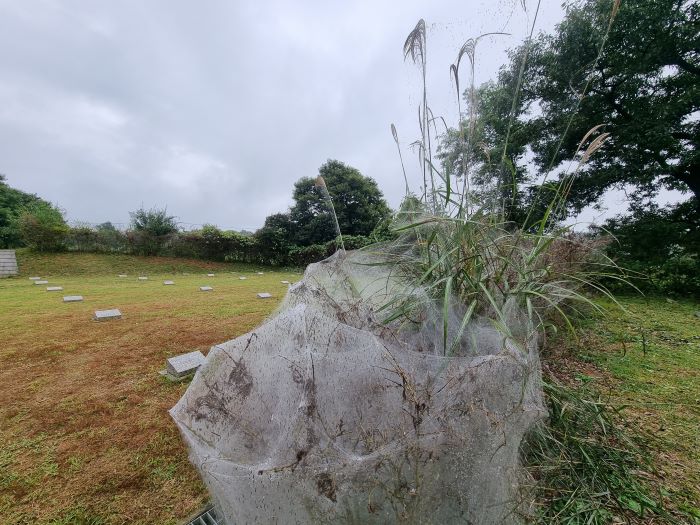
The trees surrounding the cemetery are covered in spider webs that stick to you as you walk by. (Yonhap)
The cemetery covers an area about the size of two soccer fields, but there are only around 20 tombstones with names and ranks. The rest are marked as “Unknown.”
There was once an idea to turn the cemetery into a peace park. In March 2019, Gyeonggi Province agreed to take over the cemetery from the Ministry of National Defense and transform it into a peace park.
However, this project has faced opposition from within the military and legal controversies. This year, it seems like the project has stalled, and nothing is happening.
Considering the current state of relations between North and South Korea, it’s highly unlikely that the remains in the cemetery will be returned to North Korea. So, the North Korean military cemetery will continue to be a challenging issue for the foreseeable future.
Lina Jang (linajang@koreabizwire.com)



